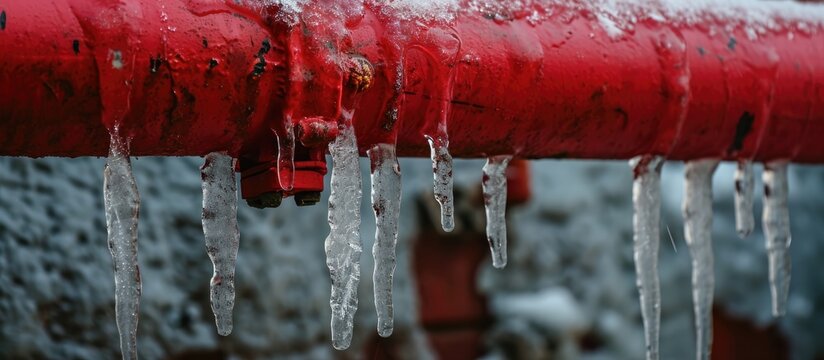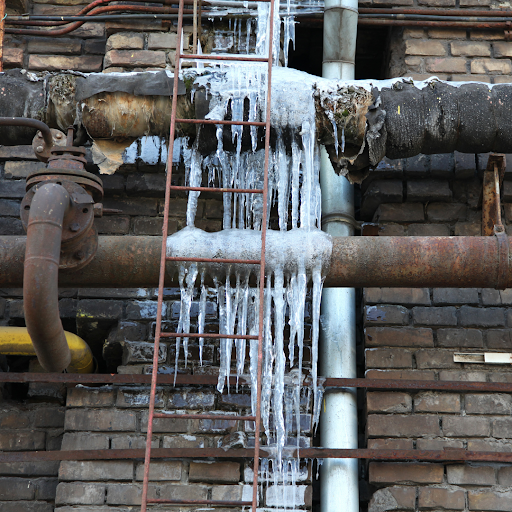How to Prevent Frozen Plumbing in Winter: Professional Advice
How to Prevent Frozen Plumbing in Winter: Professional Advice
Blog Article
We have uncovered this article pertaining to Preventing and dealing with frozen pipes listed below on the net and believe it made good sense to write about it with you over here.

Winter can damage your plumbing, specifically by freezing pipes. Below's how to avoid it from occurring and what to do if it does.
Intro
As temperatures drop, the danger of icy pipelines increases, potentially bring about expensive repair work and water damages. Comprehending how to avoid icy pipelines is critical for homeowners in chilly environments.
Prevention Tips
Insulating susceptible pipes
Wrap pipelines in insulation sleeves or make use of heat tape to protect them from freezing temperature levels. Focus on pipes in unheated or external locations of the home.
Heating strategies
Keep indoor areas appropriately heated, specifically areas with pipes. Open up cabinet doors to allow warm air to flow around pipelines under sinks.
How to determine icy pipelines
Look for decreased water flow from taps, uncommon odors or noises from pipes, and visible frost on subjected pipes.
Long-Term Solutions
Architectural changes
Consider rerouting pipes away from exterior walls or unheated areas. Add extra insulation to attic rooms, cellars, and crawl spaces.
Upgrading insulation
Invest in top notch insulation for pipelines, attic rooms, and walls. Proper insulation aids keep constant temperatures and lowers the threat of frozen pipelines.
Securing Outdoor Pipes
Garden pipes and outdoor taps
Disconnect and drain pipes yard tubes before wintertime. Mount frost-proof spigots or cover exterior faucets with insulated caps.
Comprehending Frozen Pipes
What triggers pipes to ice up?
Pipelines ice up when revealed to temperatures below 32 ° F (0 ° C) for extended periods. As water inside the pipelines ices up, it broadens, putting pressure on the pipeline wall surfaces and potentially triggering them to rupture.
Threats and damages
Icy pipelines can cause supply of water interruptions, residential or commercial property damage, and pricey fixings. Ruptured pipelines can flooding homes and cause extensive architectural damage.
Signs of Frozen Water Lines
Identifying icy pipes early can avoid them from breaking.
What to Do If Your Pipes Freeze
Immediate activities to take
If you think icy pipelines, maintain taps available to ease pressure as the ice thaws. Use a hairdryer or towels taken in warm water to thaw pipelines gradually.
Final thought
Avoiding icy pipelines calls for positive steps and fast responses. By understanding the reasons, indicators, and preventive measures, homeowners can protect their pipes during cold weather.
Helpful Tips to Prevent Frozen Pipes this Winter
UNDERSTANDING THE BASICS: WHY PIPES FREEZE AND WHY IT’S A PROBLEM
Water freezing inside pipes is common during the winter months, but understanding why pipes freeze, and the potential problems it can cause is crucial in preventing such incidents. This section will delve into the basics of why pipes freeze and the associated problems that may arise.
THE SCIENCE BEHIND FROZEN PIPES
When water reaches freezing temperatures, it undergoes a physical transformation and solidifies into ice. This expansion of water as it freezes is the primary reason pipes can burst. As the water inside the pipe freezes, it expands, creating immense pressure on the walls. If the pressure becomes too great, the pipe can crack or rupture, leading to leaks and water damage.
FACTORS THAT CONTRIBUTE TO PIPE FREEZING
Low Temperatures: Extremely cold weather, especially below freezing, increases the risk of pipes freezing. Uninsulated or Poorly Insulated Pipes: Pipes located in unheated areas, such as basements, crawl spaces, or attics, are more prone to freezing. Insufficient insulation or lack of insulation altogether exacerbates the problem. Exterior Wall Exposure: Pipes running along exterior walls are susceptible to freezing as they encounter colder temperatures outside. Lack of Heating or Temperature Regulation: Inadequate heating or inconsistent temperature control in your home can contribute to frozen pipes. PROBLEMS CAUSED BY FROZEN PIPES
- Pipe Bursting: As mentioned earlier, the expansion of water as it freezes can cause pipes to burst, resulting in significant water damage.
- Water Damage: When pipes burst, it can lead to flooding and water damage to your property, including walls, ceilings, flooring, and personal belongings.
- Structural Damage: Prolonged exposure to water from burst pipes can compromise the structural integrity of your home, leading to costly repairs.
- Mold and Mildew Growth: Excess moisture from water damage can create a favorable environment for mold and mildew growth, posing health risks to occupants.
- Disrupted Water Supply: Frozen pipes can also result in a complete or partial loss of water supply until the issue is resolved.
WHY CERTAIN PIPES ARE MORE PRONE TO FREEZING
- Location: Pipes located in unheated or poorly insulated areas, such as basements, crawl spaces, attics, or exterior walls, are at higher risk of freezing.
- Exterior Pipes: Outdoor pipes, such as those used for irrigation or exposed plumbing, are particularly vulnerable to freezing as they are directly exposed to the elements.
- Supply Lines: Pipes that carry water from the main water supply into your home, including the main water line, are critical to protect as freezing in these lines can affect your entire plumbing system.
- Underground Pipes: Pipes buried underground, such as those connected to sprinkler systems or outdoor faucets, can be susceptible to freezing if not properly insulated.
https://busybusy.com/blog/helpful-tips-to-prevent-frozen-pipes-this-winter/

As a passionate reader on How to prepare your home plumbing for winter weather, I think sharing that piece of content was important. Please take the opportunity to promote this entry if you liked it. I thank you for reading our article about Prevent Frozen Pipes .
Show Details Report this page